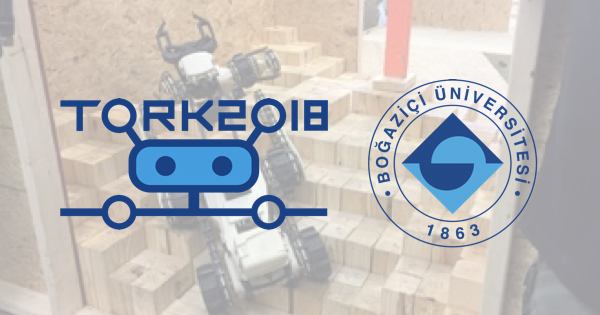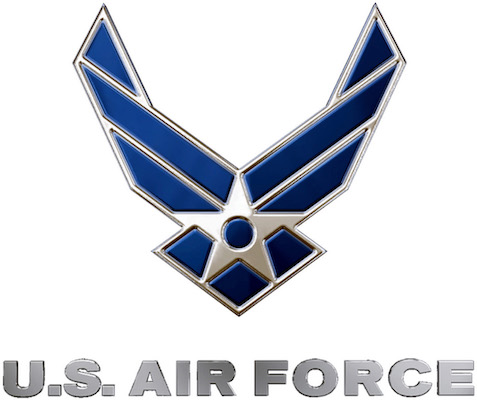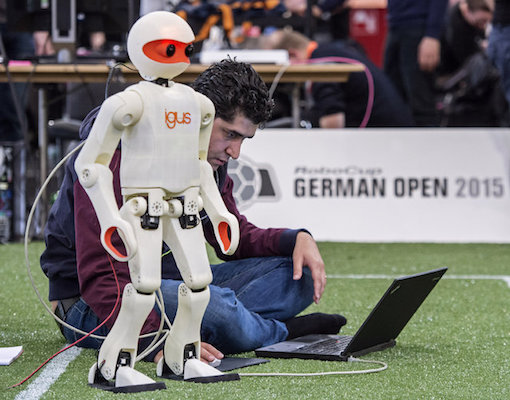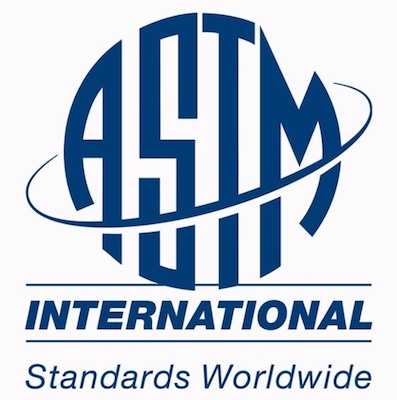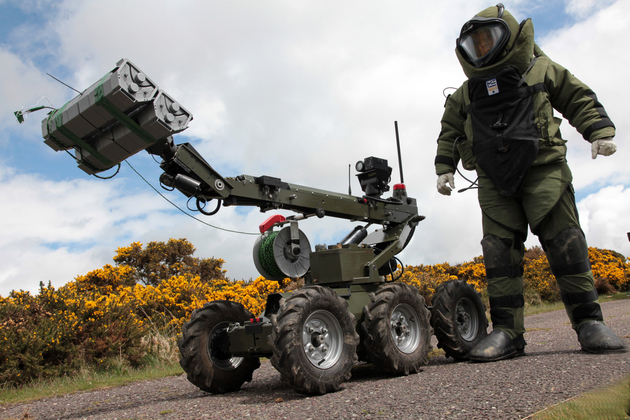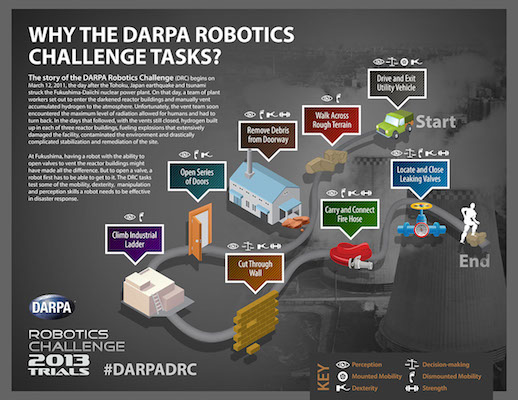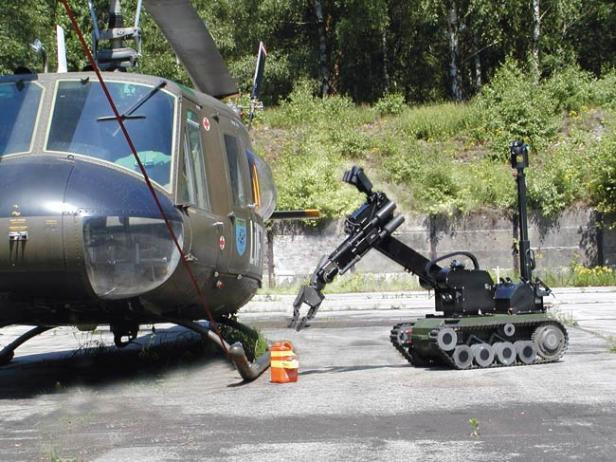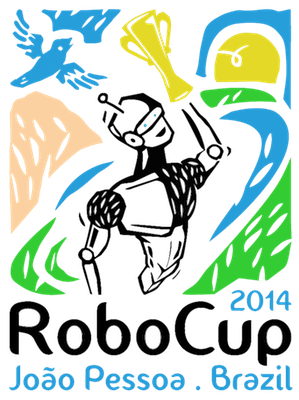Robolit Presents at ToRK2018
Robolit is invited to present at the ToRK 2018 conference to be held at Bogazici University from April 12-14. The talk, which was featured as the opening talk on the last day of the conference, covers standard test methods for robotic systems. Chiefly driven by our work as part of the ASTM-NIST-DHS Standard Test Methods for Response Robots we explain how standardization can foster a richer R&D ecosystem and greatly improve efficiency for the customers of such robotic systems.
Robot Procurement Tests for $37 million in Purchases
Robolit assisted in the administration of two large procurement testing events. Several robots came to NIST HQ, Gaithersburg to run through over 30 standard or developmental tests and have data recorded based on their performance. The data collected from these events was used to make a decision worth millions of dollars in purchases.
The first procurement was done for the Air Force and was worth $25 million. This event was held on various weeks within May, June and July where it featured small response robots such as the MTGR, Dragon Runner DR10, Firstlook 110, and the Packbot 310. The Air Force considered the data collected on each of these robots and decided to purchases several units of the MTGR. Utilizing the data collected on those four robots with the addition of data collected on the Caliber mini from ICOR another $2 million purchase was made. The winner of this procurement is not yet public news and cannot be revealed at this time.
The second procurement was for the Metrotech Bomb squads and featured four robots within the middle and heavy weight classes. This procurement was for $10 million. The robots that were tested were the Caliber T5, MK4, Telemax, and the Andros FX. The data was only recently collected and has not been submitted to the Bomb Squad yet.
In summary Robolit administered and prepared robot testing for $37 million in purchases.
Reven’s Interoperability Challenge in Jacksonville is completed
The second of the Reven’s Interoperability Challenge where NIST developed robot/operator evaluation test methods is conducted. Robolit, as part of the NIST team, helped with the setup and conduction of the tests. This event is a major step in dissemination of the ASTM test methods that have been under development for over a decade.
Reven’s Interoperability Challenge in Denver is completed
Reven’s Interoperability Exercise for countering IED is held in Denver, CO. Robolit as part of the NIST team set up a robot/operator performance evaluation test bed that is inspired by the ASTM robot test methods. The event is a major milestone where robot operator training and evaluation incorporates objective and measurable platform independent manner.
RoboCup Rescue Leauge German Open 2015 is held
RoboCup German Open is held in Magdeburg, Germany from April 23-26, 2015. Robolit took part in the Rescue League organizing committee to assist with judging the competitions. In the course of the events a new evaluation method for the best in class manipulation event is developed and used in conducting the competitions on the last day of the event.
ASTM E54.08 Homeland Security, Robotics Meeting is completed!
ASTM international hosted a meeting where it brought employees from multiple organizations to help standardize various operations, materials, procedures, apparatuses, etc. NIST is a large part of this meeting, more specifically the Standardizing of test methods for response robots. This conference was held in New Orleans, LA for a three-day period in the Sheraton Hotel. Over the course of the three days there were specific times and rooms allotted for the “Robotics Group” to present and evaluate their test methods. The “Robotics Group” (E54.08.01) consisted of employees from multiple companies around the world.
Robolit LLC worked along side NIST, The Nerve Center, SWRI, and JAEA to help discuss and present issues with some of the current test methods for response robots. Robolit provided detailed design sketches of the current test methods as well as being able change and create and new design ideas proposed along the way. Test changes included simplifying the evaluation forms of the manipulation, mobility, and maneuvering tests to accommodate multiple tests on one form as well as to clarify the parameters for “testing faults” and when to determine “success and/or statistical significance”. Also, the physical design of many tests was changed to help create a more fair testing process for varying robot weight, size and configuration.
San Diego regional training exercise conducted
San Diego bomb squads asked for a robot training facility to be set up at a local Fire department training base with the purpose of training bomb technicians to become better robot operators. The design and implementation of the test facility was done by NIST in collaboration with Robolit LLC. The Facility was set up on 11/10/14 and used throughout the following week.
Robolit LLC assisted in the training exercises through administering and recording tests performed for data collection. During the time of the event multiple local bomb squads were introduced to and practiced on the test apparatuses built and shipped by Tyndall Air Force Base.
The facility is to be used actively by both new and experienced bomb technicians. They were trained on how to administer their own tests so that the facility can continue to operate without the assistance of NIST or Robolit LLC.
DRC Training Stage setup is constructed
The DARPA Robotics Challenge (DRC) was created to encourage robot companies to think of innovative designs for robots that could respond to disastrous situations that responders could not. As part of the NIST team, Robolit, continues to contribute to the DRC test site design effort.
The DRC stage is set up to be a repeatable, reproducible test method that mimics the environment of a building/factory that has been hit by an earthquake. The tasks performed on this stage include turning a valve, traversing difficult terrain, climbing a set of stairs, opening a door, cutting through a wall and driving a vehicle. All of these tasks force robot companies to consider the real application of their design and how it could be improved upon to better assist in a real earthquake disaster.
The trial stage set up by Robolit and NIST in Charleston was designed to allow companies to come and practice DRC tasks before the final event that will be held in Pamona, CA.
Bomb Squad Commanders Meeting 2014.08 is held
The Bomb Squad Commanders Meeting brought together various bomb squads, robot developers, and the NIST team to collaborate in expanding each other’s reach. This event was held from the 25th to the 29th of August. The purpose was to show bomb squads the importance of needing the “Standard Robot Test Methods” to score/train themselves to be better bomb technicians as well as introduce them to the various robots they may want to use during real world scenarios.
Robolit was tasked with the design and layout of the test methods to be shown as well as assisting in the fabrication and set-up of the event. Robolit was also asked to capture and record various robot tests through video and through data collection.
The event proved to be very successful in that a large percentage of bomb squads were responding with the desire to implement NIST’s robot test methods in their facilities. The overall goal was to create more applicable robots to real disasters by collecting the feedback of the bomb squads and adjusting the test methods to fit the issues they are running into most often in real scenarios.
RoboCup WorldCup 2014 is held in Brasil
The RoboCup 2014 Finals was held in Joao Pessoa Brazil from July 21st to July 25th of 2014. This event brought together robotics leagues from around the world in a competition to determine the best team for the league they participated in. Each league had a number of participating teams at the college level. The event was designed to promote technological progress in the field of robotics by displaying first hand what designs were performing in what skill level.
Robolit participated in the design and implementation of the “Rescue Robot League”. This league created a disaster like scenario where robot teams scored points based on the number of “victims” they could find and identify. A referee and a judge ran the competition, at least one of which was provided by Robolit.
